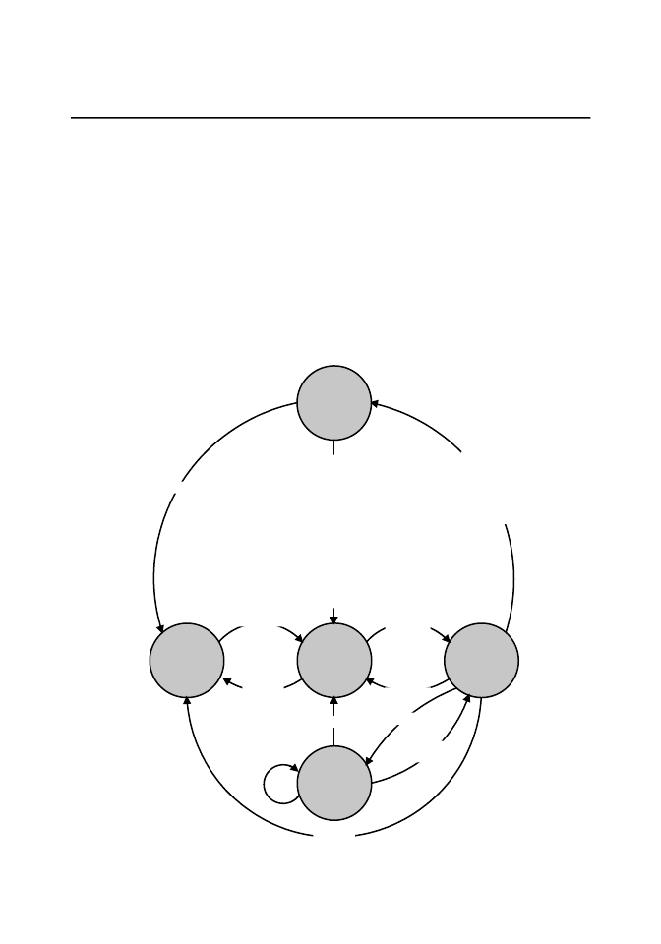- 您现在的位置:买卖IC网 > Sheet目录1193 > AD-UCOS3-SPRD (Analog Devices Inc)PRD LIC UCOS3 RTOS CORE CCES SGL
�� �
�
 �
�Chapter� 5�
�5-2� DETERMINING� THE� SIZE� OF� A� STACK�
�The� size� of� the� stack� required� by� the� task� is� application� specific.� When� sizing� the� stack,�
�however,� one� must� account� for� the� nesting� of� all� the� functions� called� by� the� task,� the�
�number� of� local� variables� to� be� allocated� by� all� functions� called� by� the� task,� and� the� stack�
�requirements� for� all� nested� interrupt� service� routines.� In� addition,� the� stack� must� be� able� to�
�store� all� CPU� registers� and� possibly� Floating-Point� Unit� (FPU)� registers� if� the� processor� has� a�
�FPU.� As� a� general� rule� in� embedded� systems,� avoid� writing� recursive� code.�
�It� is� possible� to� manually� figure� out� the� stack� space� needed� by� adding� all� the� memory�
�required� by� all� function� call� nesting� (1� pointer� each� function� call� for� the� return� address),�
�plus� all� the� memory� required� by� all� the� arguments� passed� in� those� function� calls,� plus�
�storage� for� a� full� CPU� context� (depends� on� the� CPU),� plus� another� full� CPU� context� for� each�
�nested� ISRs� (if� the� CPU� doesn’t� have� a� separate� stack� to� handle� ISRs),� plus� whatever� stack�
�space� is� needed� by� those� ISRs.� Adding� all� this� up� is� a� tedious� chore� and� the� resulting�
�number� is� a� minimum� requirement.� Most� likely� one� would� not� make� the� stack� size� that�
�precise� in� order� to� account� for� “surprises.”� The� number� arrived� at� should� probably� be�
�multiplied� by� some� safety� factor,� possibly� 1.5� to� 2.0.� This� calculation� assumes� that� the� exact�
�path� of� the� code� is� known� at� all� times,� which� is� not� always� possible.� Specifically,� when�
�calling� a� function� such� as� printf()� or� some� other� library� function,� it� might� be� difficult� or�
�nearly� impossible� to� even� guess� just� how� much� stack� space� printf()� will� require.� In� this�
�case,� start� with� a� fairly� large� stack� space� and� monitor� the� stack� usage� at� run-time� to� see� just�
�how� much� stack� space� is� actually� used� after� the� application� runs� for� a� while.�
�There� are� really� cool� and� clever� compilers/linkers� that� provide� this� information� in� a� link�
�map.� For� each� function,� the� link� map� indicates� the� worst-case� stack� usage.� This� feature�
�clearly� enables� one� to� better� evaluate� stack� usage� for� each� task.� It� is� still� necessary� to� add�
�the� stack� space� for� a� full� CPU� context� plus,� another� full� CPU� context� for� each� nested� ISR�
�(if� the� CPU� does� not� have� a� separate� stack� to� handle� ISRs),� plus� whatever� stack� space� is�
�needed� by� those� ISRs.� Again,� allow� for� a� safety� net� and� multiply� this� value� by� some� factor.�
�Always� monitor� stack� usage� at� run-time� while� developing� and� testing� the� product� as� stack�
�overflows� occur� often� and� can� lead� to� some� curious� behaviors.� In� fact,� whenever� someone�
�mentions� that� his� or� her� application� behaves� “strangely,”� insufficient� stack� size� is� the� first�
�thing� that� comes� to� mind.�
�86�
�发布紧急采购,3分钟左右您将得到回复。
相关PDF资料
AD-UCUSBD-SPRD
PRD LIC UCUSB DEV CORE CCES SGL
AD637-EVALZ
BOARD EVALUATION FOR AD637
AD736-EVALZ
BOARD EVALUATION FOR AD736
AD737-EVALZ
BOARD EVALUATION FOR AD737
AD8007AKS-EBZ
BOARD EVAL FOR AD8007AKS
AD8018ARU-EVAL
BOARD EVAL FOR AD8018
AD8034ART-EBZ
BOARD EVAL FOR AD8034ART
AD8040AR-EBZ
BOARD EVAL FOR AD8040AR
相关代理商/技术参数
ADUCOSC100
制造商:Analog Devices 功能描述:ADC - Rail/Tube
ADUCOSC100-REEL
功能描述:DAC MICROCONVERTER DUAL TSSOP 制造商:analog devices inc. 系列:* 零件状态:上次购买时间 标准包装:1
ADUCOSC100-REEL7
功能描述:DAC MICROCONVERTER DUAL TSSOP 制造商:analog devices inc. 系列:* 零件状态:上次购买时间 标准包装:1
ADUCOSCZ100
制造商:Analog Devices 功能描述:
ADUCOSCZ100-REEL7
制造商:Analog Devices 功能描述:ANAADUCOSCZ100-REEL7 12 BIT ADC WITH EMB
ADuC-P7026
功能描述:开发板和工具包 - ARM PROTOTYPE BRD FOR ADUC7026 ARM7 RoHS:否 制造商:Arduino 产品:Development Boards 工具用于评估:ATSAM3X8EA-AU 核心:ARM Cortex M3 接口类型:DAC, ICSP, JTAG, UART, USB 工作电源电压:3.3 V
ADUCRF101
制造商:Analog Devices 功能描述:PRECISION ANALOG MICRCONTROLLER - Tape and Reel
ADUCRF101BCPZ128
制造商:Analog Devices 功能描述:PRECISION ANALOG MICROCONTROLLER WITH RF TRANSCEIVER, ARM CO - Trays